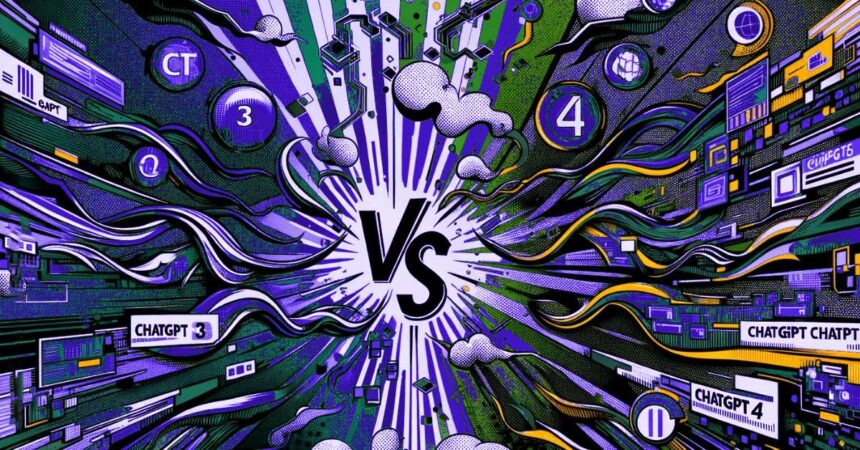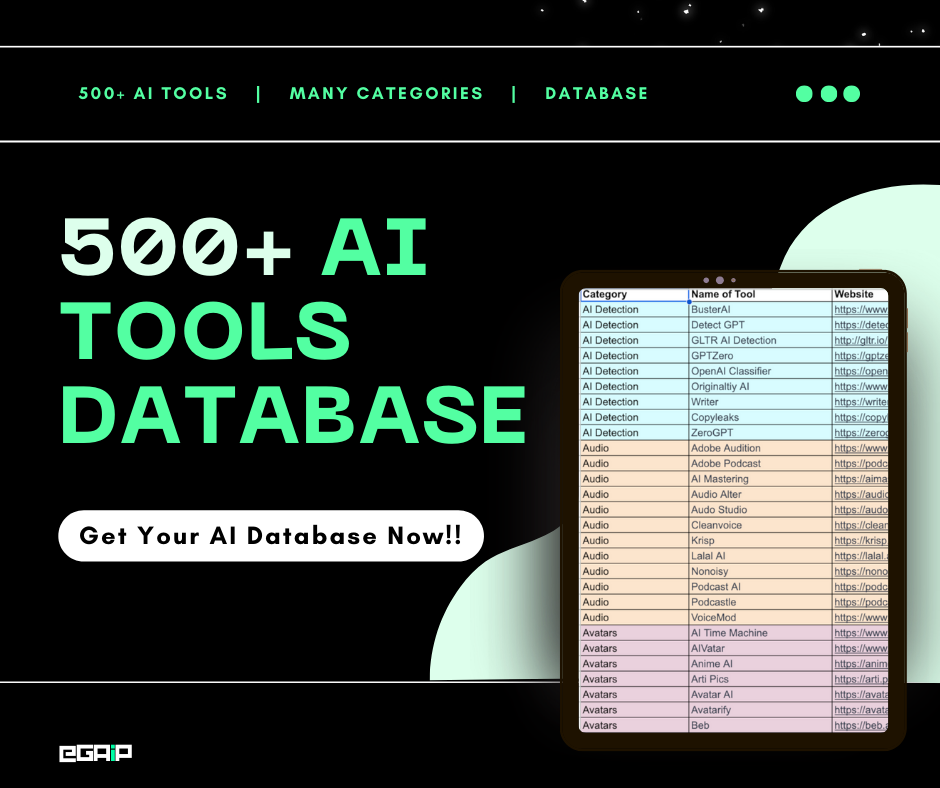Wondering about the key differences between ChatGPT 3 and ChatGPT 4?
You’re not alone. Many people are curious about what sets these two versions apart, especially regarding practical applications. This comparative analysis is just for you, especially if you want ChatGPT Plus. ChatGPT 3 made waves with its capabilities, but ChatGPT 4 comes with notable improvements and new features.
In this article, we’ll dive into the specifics, comparing ChatGPT 3 and ChatGPT 4 to help you decide which version best aligns with your goals and tasks.
What is ChatGPT
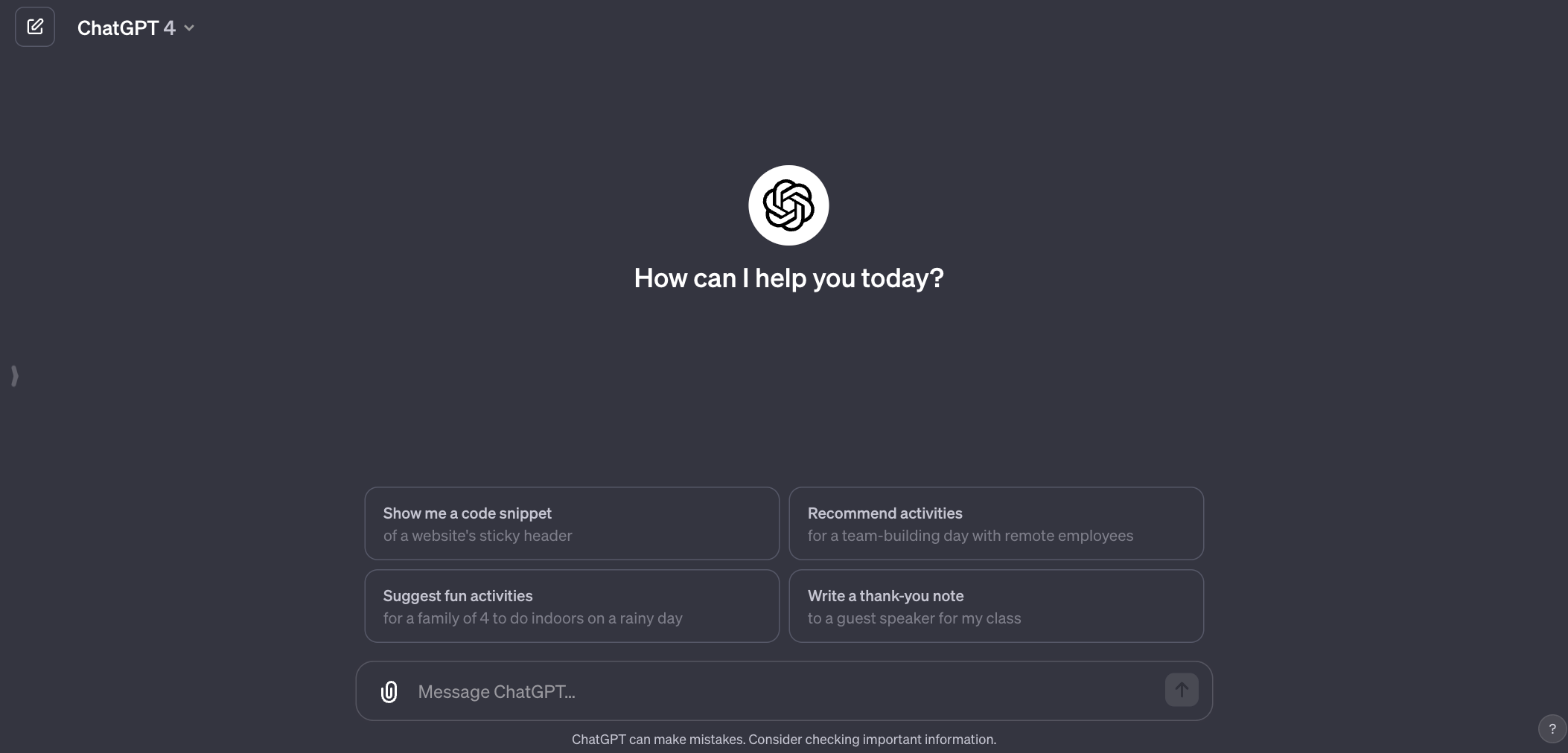
ChatGPT, developed by OpenAI and released on November 30, 2022, is an AI chatbot known for its ability to generate human-like text. It’s built on the foundations of large language models (LLMs) and the Generative Pre-trained Transformer (GPT) architecture.
This technology allows ChatGPT to understand and respond to user input conversationally, making it appear incredibly human-like in its interactions.
One of the key aspects of ChatGPT is its memory capability. Unlike other chatbots, it can remember previous parts of the conversation, which helps it respond more fluidly and contextually.
This feature enhances the overall user experience, making conversations with ChatGPT more engaging and coherent.
Now that you have understood what ChatGPT is let’s now jump to our main section and find out everything you need to know about ChatGPT 3 and ChatGPT 4 and their differences.
Everything You Need to Know About ChatGPT 3
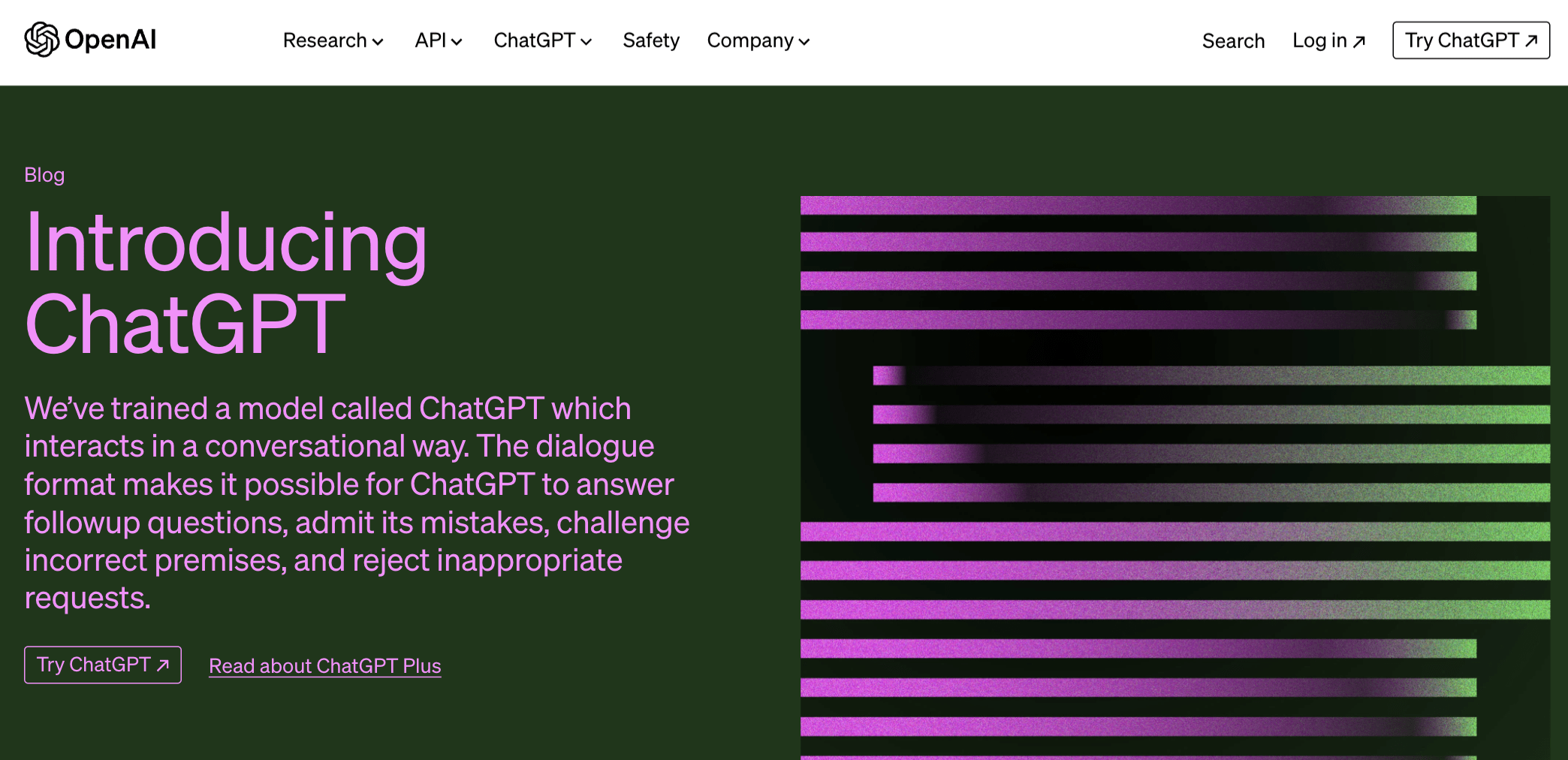
ChatGPT 3, developed by OpenAI, is a revolutionary language processing AI model that stands out for its ability to generate human-like text.
Officially known as “Generative Pre-trained Transformer 3,” it’s the most powerful language model, with an impressive 175 billion parameters. This makes it among the largest and most sophisticated language-processing AI models available.
The prowess of ChatGPT 3 lies in its versatile capabilities. It can perform various tasks for chatbots, including language translation, language modeling, and even text generation.
In conversations, ChatGPT 3 is good. It doesn’t just give yes or no answers; it can write long, detailed replies. This means it can keep talking about a topic, fix mistakes it made, argue if something doesn’t seem right, and say no to things it shouldn’t do.
To learn how to do all this, ChatGPT 3 read a lot of stuff on the internet – like books, websites, and Wikipedia. It learned from about 300 billion words! This helps it guess what to say next in a conversation.
But there are some things ChatGPT 3 can’t do. It doesn’t know everything, especially stuff that happened after 2021.
Sometimes, it might even get things wrong or say something it shouldn’t. It’s not perfect and doesn’t always understand jokes or tricky language. Also, ChatGPT 3 can write a lot, but sometimes, it might focus too much on one part of what you asked and miss the other parts.
Tasks ChatGPT 3 Can Perform
Now, it’s time to talk about the tasks that ChatGPT 3 can perform without any errors or hallucinations, or we should say, with minor errors.
In our personal opinion, GPT 3 can only perform certain sets of tasks that do not require very deep logical thinking, longer prompts, longer conversations, and more.
So if you’re considering using ChatGPT 3 for professional tasks, we will not recommend it.
So, here are some tasks ChatGPT 3 can perform:
1. Creating Deliciously Fine Recipes
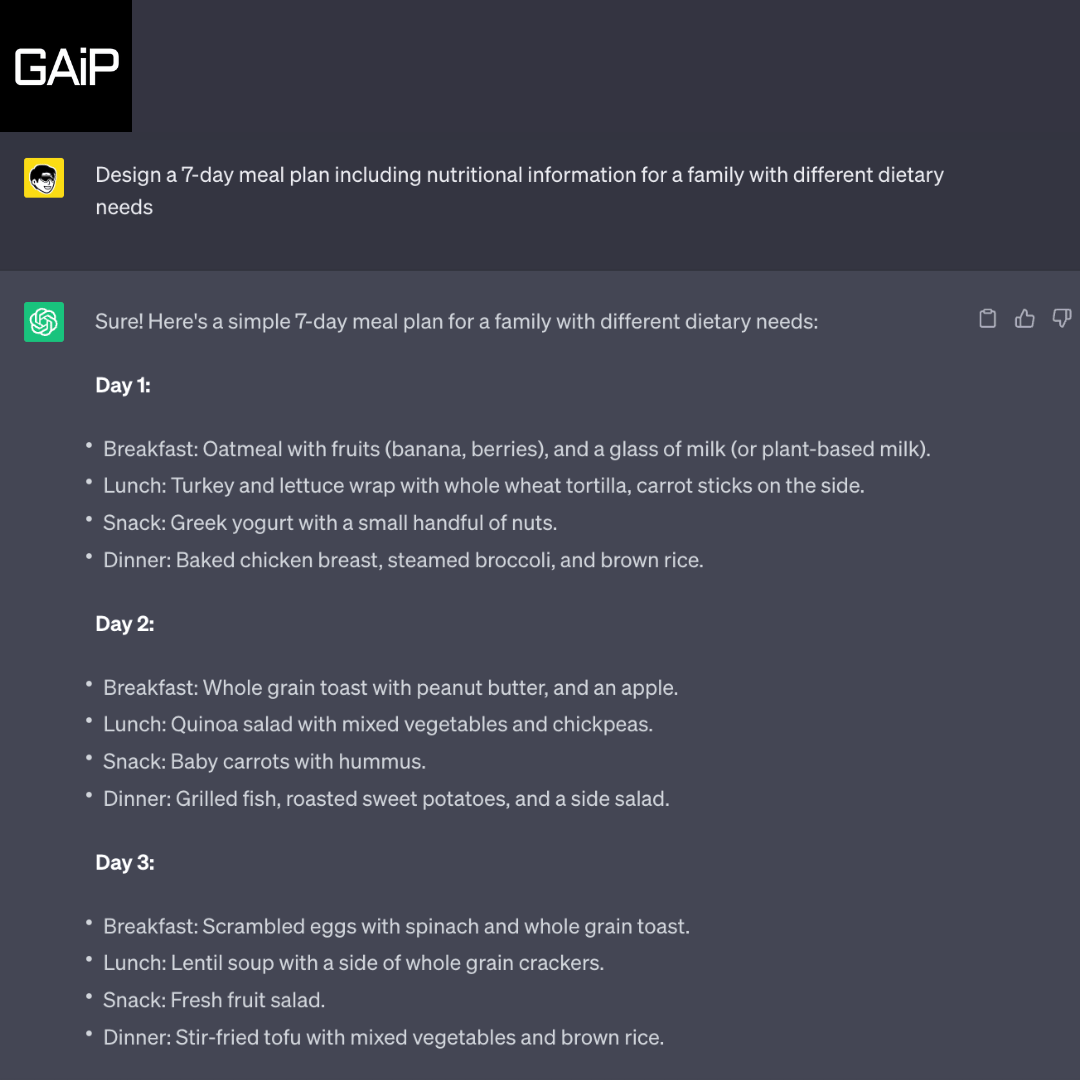
ChatGPT 3 can whip up various recipes based on your preferences and the ingredients you have. You can get diet-friendly recipes by specifying dietary needs.
Just ask for a recipe from a specific cuisine, and you can customize it by mentioning ingredients you want or don’t want.
2. Acting as a Virtual Travel Guide
Planning a trip? ChatGPT 3 can be your virtual tour guide. Tell it where you’re going, and it’ll give you tips on the best spots, local cuisines, and historical insights.
It can advise on appropriate clothing based on the climate, but remember, it won’t provide the latest weather updates.
3. Writing and Composing Music
ChatGPT 3 is like a digital composer. It can create music in almost every genre, write lyrics, suggest chord progressions, and even give composing instructions. If you’re curious about how one artist’s song would sound in another’s voice, ChatGPT 3 can show you that too.
4. Playing Some Fun Trivia Games
For a bit of fun, ChatGPT 3 can set up trivia games. Just give it a theme, and it’ll come up with questions. You can also challenge it by providing specific trivia questions and answers. While it can create or solve riddles, it might not always get them right.
5. Writing Essays and Blogs
ChatGPT 3 can write essays and blogs on any topic. It’s helpful for students and teachers, assisting with assignments, generating ideas, and even grading homework.
Remember, it’s best to add your personal touch to its suggestions.
6. Creating Code Snippets
ChatGPT 3 is a coder’s ally. It can generate code snippets in multiple programming languages. These snippets are useful for solving common programming challenges or understanding specific coding techniques.
7. Generating Engaging Email Subject Lines
For email marketing, ChatGPT 3 can generate creative subject lines to attract subscribers. It tailors these to fit your brand’s voice, and you can use it for A/B testing to find what works best with your audience.
Tasks ChatGPT 3 Cannot Perform Accurately
The above section covered some tasks ChatGPT 3 can perform without major errors or hallucinations. However, there are a ton of workflows that ChatGPT 3 will disappoint you in:
1. Multitasking
ChatGPT 3 struggles with multitasking. If you give it multiple tasks at once, like doing calculations and writing an essay, it cannot process them simultaneously or in sequence.
2. Demonstrating Creativity
While ChatGPT 3 can generate creative responses, its creativity is limited to patterns it has learned. It may struggle with tasks requiring high levels of original creativity or novel ideas.
3. Providing In-Depth Information
ChatGPT 3 often provides summaries rather than detailed information. Especially on complex topics, its responses might lack depth and sometimes contain inaccuracies.
4. Understanding Specialized Topics
ChatGPT 3 may falter on rare or specialized topics that lack extensive online data. In such cases, it might provide superficial or irrelevant answers.
5. Avoiding Biased Responses
The training data of ChatGPT 3 may contain biases, which can be reflected in its responses. This might lead to answers that are inadvertently biased or discriminatory.
6. Understanding Context and Emotions
ChatGPT 3 often has difficulty understanding context, especially humor and sarcasm. It also cannot express or interpret emotions effectively, making it unsuitable for tasks requiring emotional intelligence.
7. Solving Complex Mathematical Problems
ChatGPT 3 can handle simple math but struggles with complex calculations or multi-step mathematical problems. It might take too long or provide incorrect solutions.
8. Completing Long-Form Responses
When asked to write long-form content, ChatGPT 3 might stop mid-way and require prompts to continue, which can be inconvenient for users expecting complete responses in one go.
ChatGPT 3: User Experience and Feedback
User reviews of ChatGPT reveal a mix of admiration and constructive criticism.
Many users delight at ChatGPT’s versatility, praising its ability to assist in various tasks, including content creation, programming, and educational support. Its intuitive design and ease of use are frequently highlighted, making it accessible even to those with little technical background.
The AI’s ability to generate informative, conversational, and context-aware responses is particularly appreciated.
However, there are notable areas for improvement.
Users point out limitations in ChatGPT’s knowledge base, with some information being outdated or incorrect, particularly for events after 2021.
This sometimes results in inaccuracies, especially when dealing with recent developments or highly specialized topics. Users also mention its occasional verbosity and sensitivity to input phrasing, which can affect the precision and relevance of its outputs.
Another common point of critique is ChatGPT’s tendency to generate biased responses, reflecting the biases present in its training data.
This aspect is a significant drawback, particularly for users seeking unbiased information or opinions.
Check out all the reviews here: ChatGPT 3 User Reviews.
Everything You Need to Know About ChatGPT 4
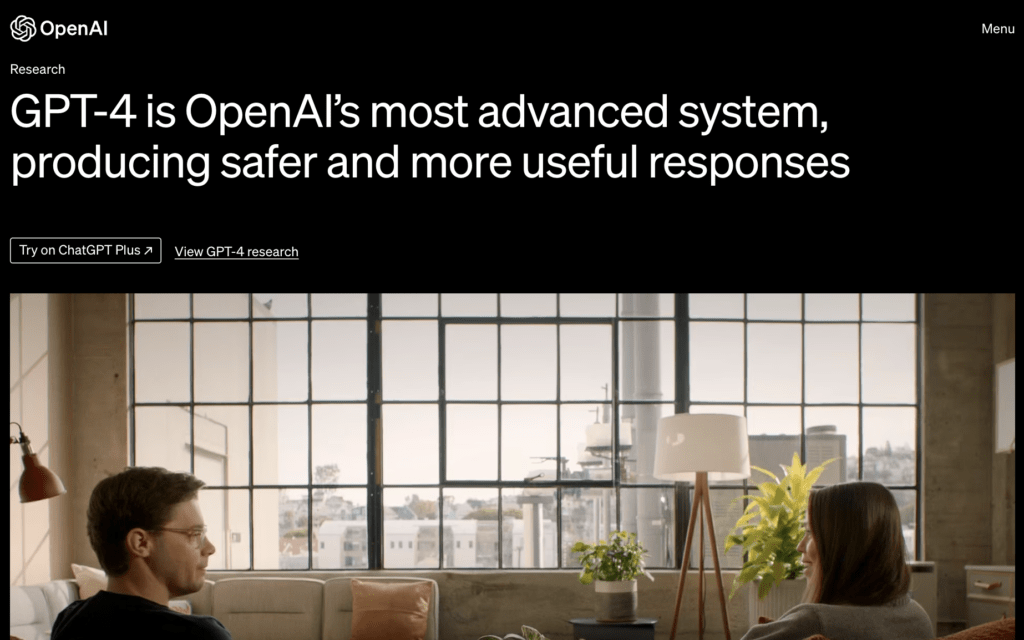
ChatGPT 4, launched on March 14, 2023, by OpenAI, represents a significant advancement in AI chatbot technology.
It is the fourth iteration of the Generative Pre-trained Transformer series and builds upon the capabilities of its predecessor, ChatGPT 3.5.
Known for its multimodal abilities, ChatGPT 4 can process text and images, making it more versatile and capable than earlier.
This model was created after OpenAI devoted six months to improving its design, focusing on making it safer, more accurate, creative, and collaborative. ChatGPT 4 is 40% more likely to provide correct answers than its predecessor and demonstrates reduced bias and fewer errors in its responses.
However, like ChatGPT, it does not lack information on events after 2021.
ChatGPT 4 is available to ChatGPT Plus, Team, and Enterprise subscribers for a monthly fee and as an API tool for developers.
It has been integrated into various applications, including Microsoft’s Bing search engine.
Businesses like Morgan Stanley and Duolingo use ChatGPT 4 for tasks such as organizing wealth management data and aiding language learning.
1. Analyzing More Than Text and Visual Input

Unlike ChatGPT 3, GPT-4 can process both text and images. For instance, it can turn a drawing into a functional website or explain a joke from a series of images.
This multimodal capability was not possible with ChatGPT 3, making GPT-4 more versatile in handling a broader range of inputs.
The other awesome feature is that GPT-4 can take images as inputs and generate captions, classifications, and analyses.
2. Coding Made Even Easier
GPT-4 enhances its coding capabilities beyond what was seen in ChatGPT 3. Users, even with little coding knowledge, can use it to recreate games or develop apps, following step-by-step instructions provided by the AI.
It writes code in all major programming languages and offers improved assistance in debugging and optimizing code compared to ChatGPT 3.
3. Providing More Precise Responses
GPT-4 can produce responses up to 25,000 words, significantly more than ChatGPT 3. It offers detailed instructions for unique scenarios with higher reliability.
This improved detail and response reliability mark a clear advancement from ChatGPT 3.
4. Complex Knowledge Work
GPT-4’s enhanced understanding of complex subjects allows it to perform tasks that require deep knowledge, such as conducting literature reviews and providing expert-level insights.
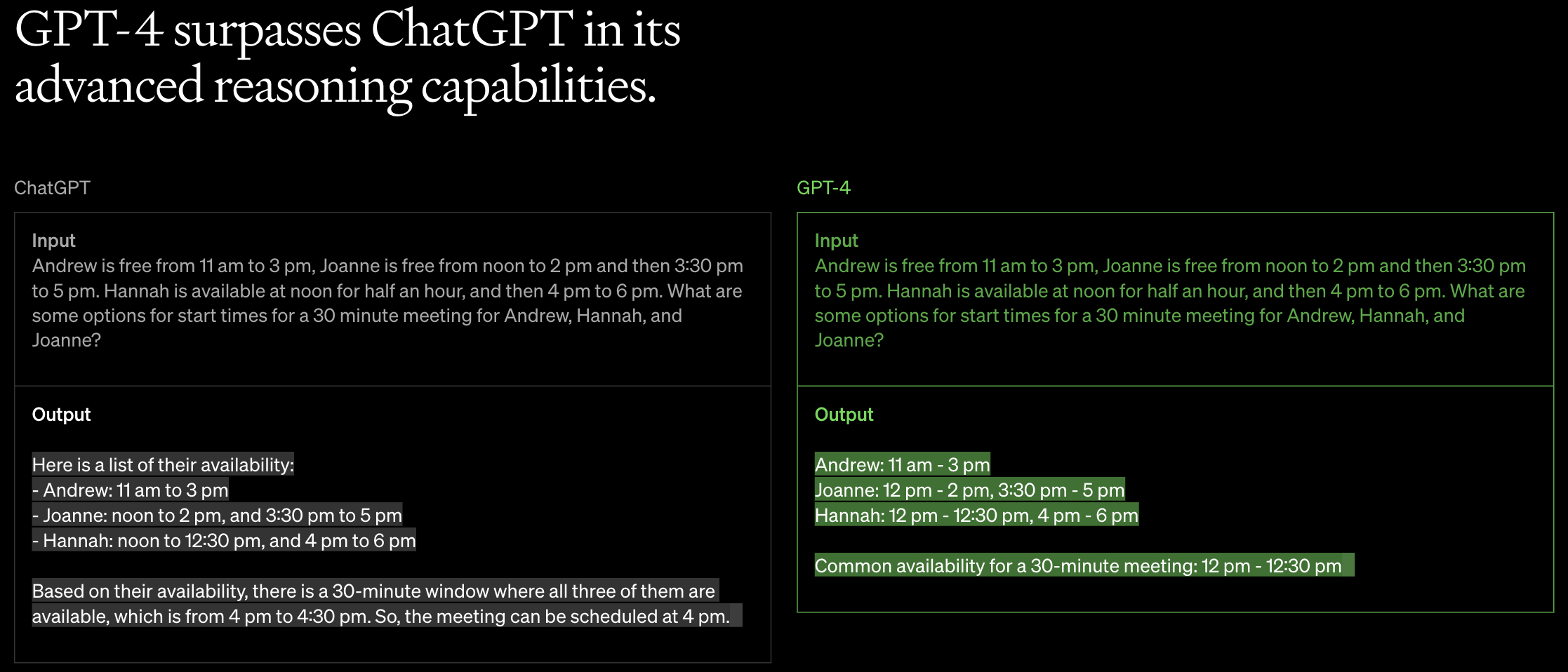
This is a step up from ChatGPT 3, which might struggle with the depth and accuracy required for such tasks.
In a nutshell, ChatGPT 4 or GPT Plus can do anything and almost everything with no to minimal errors. And the best part is that GPT 4 has additional features like GPTs, which enable you to train your data.
You can learn how to create your custom GPTs in ChatGPT Plus.
ChatGPT 4 User Feedback and Review
The user review of ChatGPT 4 by Michael King, a coder and DevOps engineer, presents a balanced perspective on the AI model’s capabilities and limitations.
King appreciates the advancements in GPT 4, particularly its improved text output, which he finds more coherent, better structured, and natural-sounding compared to GPT 3.5.
He highlights the model’s enhanced ability to understand the context of entire conversations, making its responses more accurate and personalized.
However, King points out some significant drawbacks. He criticizes the restrictive request limits for ChatGPT Plus members, finding the reduction from 100 to 25 requests every three hours insufficient for his professional and personal use.
This limitation, combined with a lack of clarity on the remaining requests and the duration of the time window, adds to his frustrations.
Another notable issue King faces is the web interface’s inability to accommodate the increased token limit of GPT 4.
Despite the model’s capacity to handle input of almost 25,000 words, the interface still operates under the constraints of older models, hindering the full utilization of GPT 4’s potential.
ChatGPT 3 vs ChatGPT 4: Comparative Analysis
| Feature | ChatGPT 3 | ChatGPT 4 |
|---|---|---|
| Model Size | 175 billion parameters | Significantly larger than ChatGPT 3 |
| Capabilities | Language translation, text generation, language modeling | Enhanced text generation, ability to process both text and images (multimodal) |
| Token Limit per Request | 4096 tokens (approx. 3000 words) | 32000 tokens (approx. 25000 words) |
| Message Limits | Unlimited | 40 messages/ 3 hour |
| Knowledge Cut-off | Up to 2021 | Recent knowledge |
| User Experience | Conversational, human-like interactions, but with occasional inaccuracies and limitations in specialized topics | More coherent, better structured, and natural-sounding responses; improved context understanding |
| Creativity and Context | Limited creativity, struggles with high levels of originality; sometimes lacks depth in responses | Improved creativity and context comprehension; better at maintaining conversation history and context |
| Bias and Sensitivity | Presence of biases from training data; difficulty with humor and sarcasm | Reduced bias and fewer errors; improved but not perfect understanding of nuances |
| Tasks Suited For | General conversation, basic Q&A, simple coding help, content generation | Advanced coding assistance, complex problem-solving, deeper content generation, handling larger data inputs |
| Interface and User Accessibility | Traditional chat interface, limitations in handling large text inputs | Advanced features expected but some limitations in web interface compatibility with increased token limit |
| Professional Use Suitability | Useful but with caution due to limitations | More suited for professional tasks with its enhanced capabilities |
| Tools | Does not comes with browsing, DALL E, and Plugins | Does not come with browsing, DALL E, and Plugins |
| Overall Performance | Impressive for a wide range of tasks but with notable limitations | Marked improvement in accuracy, context understanding, and detailed response generation |
The End!
ChatGPT and ChatGPT-4 are both language models developed by OpenAI with impressive capabilities. While ChatGPT has a maximum parameter size of 1.5 billion, ChatGPT-4 is a much larger model with a maximum parameter size of 6 billion.
This difference in size allows ChatGPT-4 to perform more complex tasks and generate more sophisticated responses, making it a better choice for tasks that require a higher level of language understanding.
However, ChatGPT is still a powerful tool for many use cases and can provide excellent responses for various applications.
Ultimately, the choice between ChatGPT and ChatGPT-4 will depend on the user’s specific needs and the complexity required for the task.

